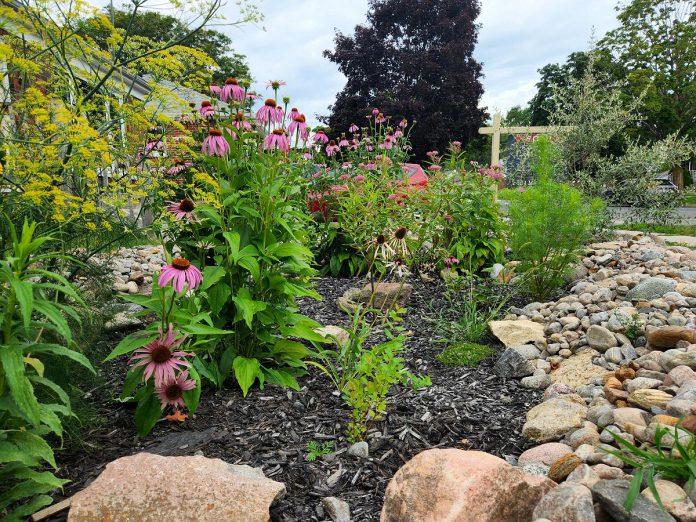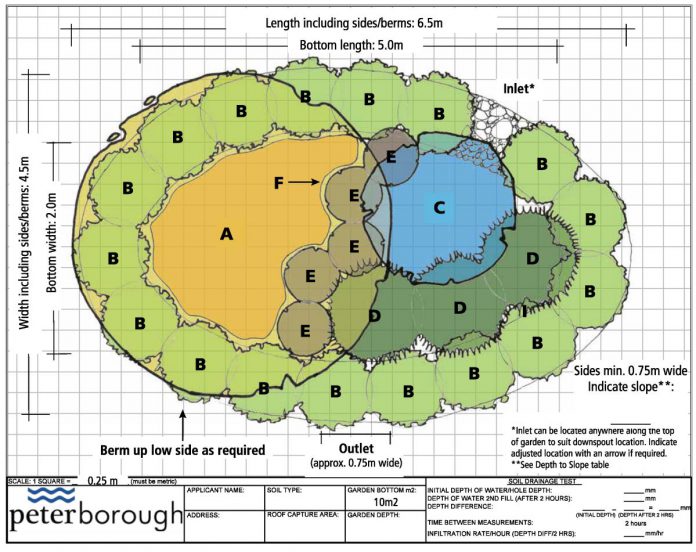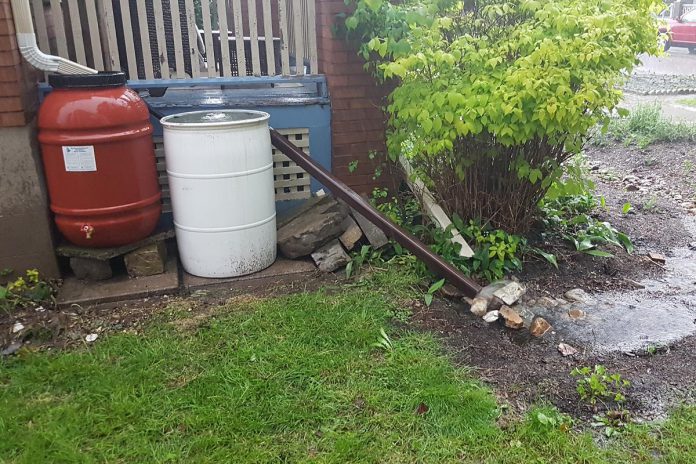
“I am fed by water, but often dry. I am urban infrastructure that you — yes, you — can DIY (do-it-yourself!). What am I?”
If you answered a rain garden, you’d be correct.
Rain gardens are bowl-shaped gardens designed to take in runoff from a nearby hard surface, such as a roof or driveway. They are a type of ‘green infrastructure’. Green infrastructure refers to systems that harness living materials to provide important urban functions, like stormwater management.
The plants and soil in a rain garden absorb runoff and filter out pollutants before returning water to the ground, diverting these toxins from local waterways.
In 2023, Sue McGregor-Hunter was keen to install a rain garden because of the positive impact it would have on the Jackson Creek sub-watershed.
“It is very empowering to know that as individuals we can take an active role in improving our environment,” McGregor-Hunter says.
“Not only does the rain garden stop water from our roof and sump pump from running onto the street, where it collects contaminants before entering the storm sewer system, it has also become a haven for pollinators. The bees love it and so do we.”
In many mid-sized cities with infrastructure similar to ours, it takes only 15 minutes for rainwater hitting the roof of your house to reach the natural waterways of the community. Everyone in Peterborough lives close to a shoreline and we can all play a role in managing water responsibly.
“Currently, only 25 per cent of the City of Peterborough’s stormwater is filtered for pollutants before entering natural waterways, such as the Otonabee River or Jackson Creek,” explains Curtis Mei, the city’s stormwater systems coordinator.
“When it rains, urban runoff (stormwater) carries sediment and pollutants from vehicles, fertilizers, road salt, animal waste, and grass clippings into these waterbodies, which pollutes natural habitat and our source of clean drinking water.”
Rain gardens capture storm water on-site giving it time to infiltrate into the soil. The deep root systems of native species planted in a rain garden help create healthy spongy soil that can remove 90 per cent of chemicals and 80 per cent of sediments from runoff. A rain garden allows for 30 per cent more water to soak into the ground when compared to a regular grass lawn.
Rain gardens are an aesthetically pleasing way to do your part to limit the pollution caused by the urban runoff generated from your property. Not only are rain gardens functional — they help with flood control and reduce pollution — but they can also increase the curb appeal of your property.
There are many additional benefits to rain gardens. They provide important habitat for native insects and wildlife, reduce the urban heat effect, and absorb excess carbon from the atmosphere. When multiple homeowners install rain gardens on the same street, it can even lower neighbourhood risk of flooding during heavy storms.

The City of Peterborough’s Rain Garden Subsidy Program is entering its fifth season. The program subsidizes the cost of installing a rain garden to a maximum of $1,000 per applicant. GreenUP supports this program by providing applicants with educational resources throughout the application and design process.
There are a limited number of subsidies available each year, which are distributed on a first-come, first-served basis.
This year, eligibility has been expanded to include commercial and institutional properties such as businesses, schools, and community centres. Integrating green infrastructure into these types of spaces can help clean and manage stormwater in areas with a high proportion of paved surfaces, such as the downtown or other commercial corridors.
Staff at GreenUP can help you find a suitable location for your rain garden. They can also help applicants complete the pre-eligibility questionnaire. After filling out the questionnaire, you will be ready to design your garden and submit your full application.
Rain garden design templates are a new feature of the Rain Garden Subsidy program. The template gardens are designed to suit a range of properties and garden styles and prioritize the inclusion of plants native to this area. The templates and other resources, including GreenUP’s four-part video series on the Rain Garden Subsidy Program, are freely available for everyone to use at greenup.on.ca/rain-garden.
Start designing your rain garden this season — the waterways will thank you.

The Rain Garden Subsidy Program is an initiative of the City of Peterborough delivered in collaboration with GreenUP. For more information and to apply, visit peterborough.ca/raingarden, or contact Program Coordinator Laura Keresztesi at laura.keresztesi@greenup.on.ca.



























